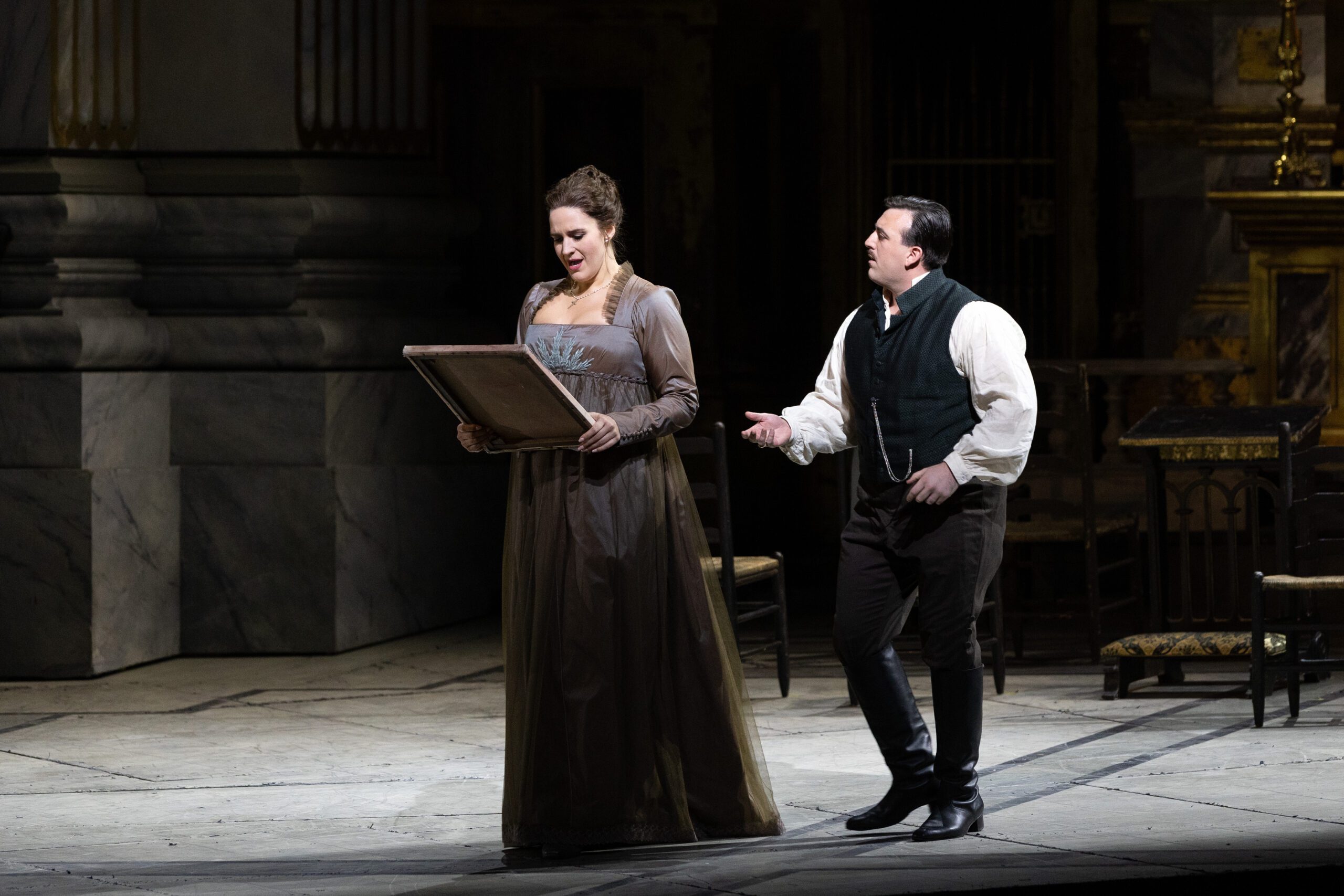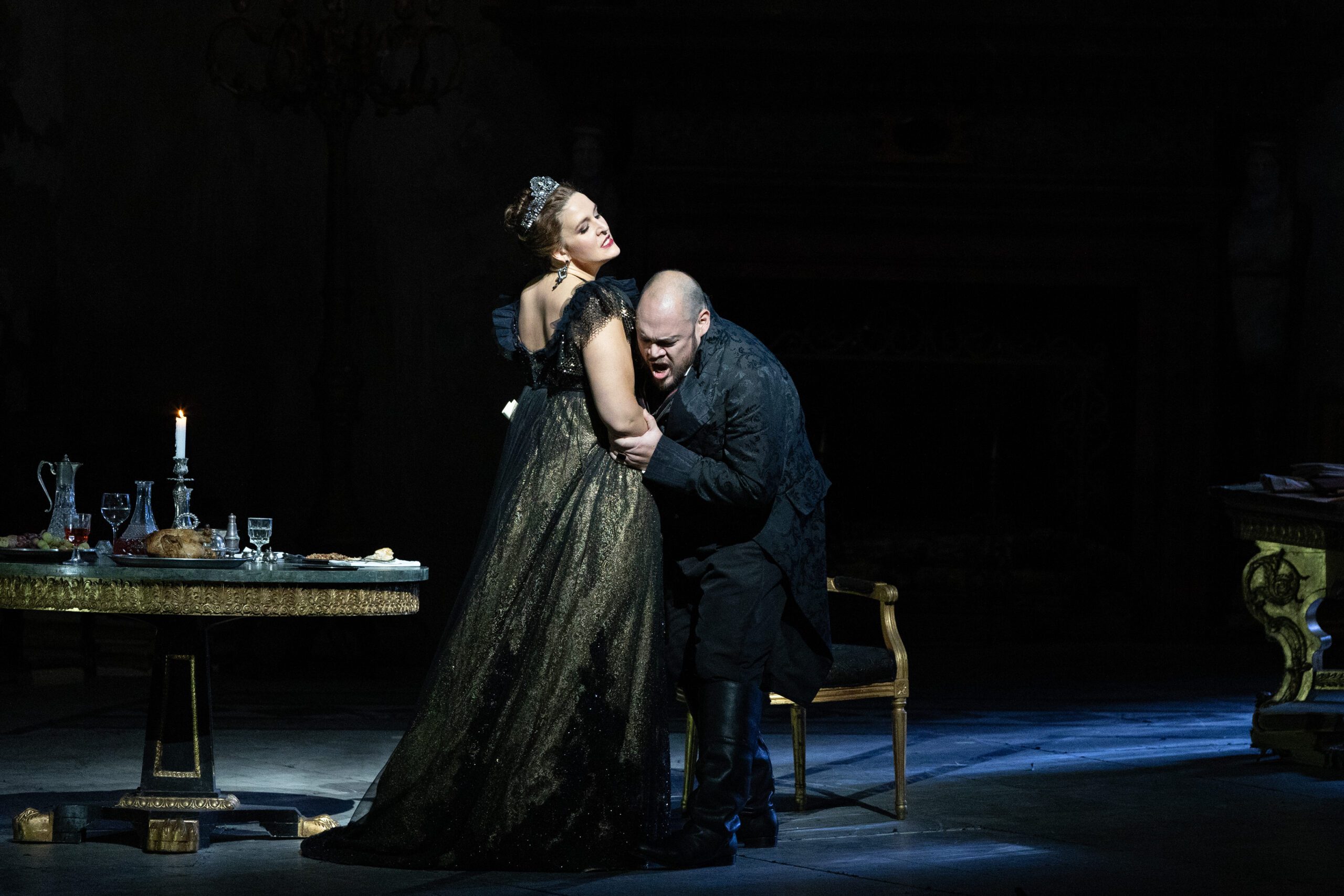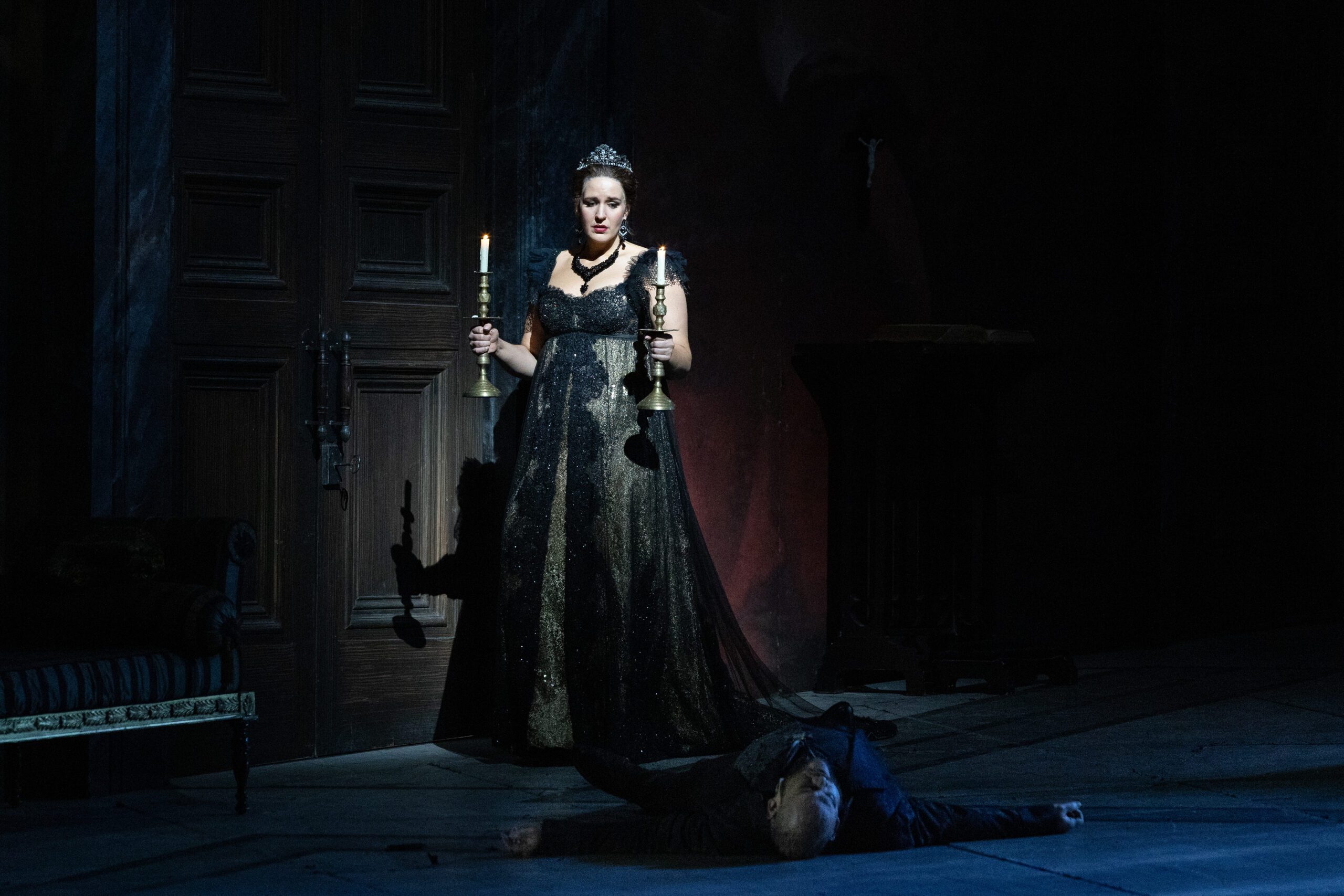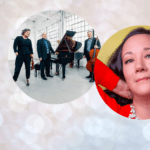Editor’s Note: Although this production does not feature Canadian singers – it is conducted by Yannick Nézet-Séguin – this review is provided since the production will be available in cinemas across the country on November 23, 2024.
Puccini’s Tosca was three weeks past its first birthday when it made its Metropolitan Opera (and American) debut on February 4, 1901. Croatian soprano Milka Ternina leapt from the Castel Sant’Angelo that surely memorable night, and, in the course of the thousand-plus Met performances since then, Tosca has assumed a dizzying variety of faces, physiques, voices, temperaments and national origins. There was the glamorous American brunette Geraldine Farrar, the Met’s most frequent Tosca, with a tally of 67 death leaps between 1909 and 1922, and there was the equally magnetic Moravian blonde Maria Jeritza who, from 1921 to 1932, jumped just one digit short of Farrar’s total. A slightly distant third place, with 45 plunges between 1955 and 1970, belongs to Renata Tebaldi – my own first Tosca and curiously one of the fairly few native Italians to have played the Roman diva at the Met.
Now there’s Norway’s lovely, statuesque Lise Davidsen, singing her much-anticipated first New York Tosca on the heels of her role debut in Berlin and subsequent performances in Munich. It’s a role unlikely to become a fixture of her repertory – neither vocally nor temperamentally is it a natural fit – though I can imagine her trotting it out now and then as a palate cleanser between generous portions of Wagner and Strauss. Hers was a gentler, less overtly volatile Tosca than the norm, her jealousy in the first act was more lightly inflected, though few, in Act Three, can have capped their narration of Scarpia’s murder with a more thrillingly house-filling high C or flung themselves to their demise with a more death-defiantly potent high B-flat. Unfortunately, her second act – the heart of Tosca – was problematic. The voice’s relative lack of presence from the lower midrange and down and her reluctance to bite into Tosca’s many parlando interjections left important moments shortchanged.
Davidsen wasn’t much helped by Yannick Nézet-Séguin’s penchant for hiking up the orchestral decibels whenever the theatrical temperature rose, or by a Scarpia – Quinn Kelsey – whose self-containment was a match for hers. “Vissi d’arte” seemed to emerge from nowhere, not as the quiet centerpiece of a life-or-death confrontation. But Davidsen sang it beautifully and feelingly, and the ensuing ovation may have energized her for the rest of the act, when for the first time she and Kelsey struck some real sparks. She’s a smart singer and a hard worker, and she deserves high credit for emerging from the concept-laden, director-driven Berlin and Munich productions unscathed enough to adapt gracefully to the Met’s, in which David McVicar unfashionably suppresses his own ego in service to Puccini and Tosca.

Photo Credit: Marty Sohl/Met Opera
Lise Davidsen and Freddie De Tommaso as Tosca and Cavadarossi
As Cavaradossi, the Italo-British Freddie De Tommaso, a Met newcomer, was her partner in all three venues. He is a vibrant, Italianate spinto tenor whose basic vocal rightness for the role tended to highlight her wrongness, despite an otherwise clear rapport (they’re friends offstage). His two arias were healthily delivered but notably short of subtlety. And while Kelsey may have underplayed the villainy – I like a Scarpia to ooze a kind of silken sleaze – his singing, big and burnished, couldn’t easily be faulted. Patrick Carfizzi, a fixture of McVicar’s seven-year-old production, again made a splendid Sacristan; Kevin Short was a strong Angelotti; and young Luka Zylik’s Shepherd opened Act Three with a winningly sweet and simple account of his offstage song.
For him, Nézet-Séguin kindly held the orchestra in check. Here and throughout the evening there were instrumental niceties that enticed the ear. Too many of them, perhaps – this was a moment-to-moment Tosca, without much overall propulsion and sweep.
The performance I saw on November 15 – the second with this cast and conductor – wasn’t perfect. But it was recognizably Tosca, which in today’s opera world is itself an endorsement. And come this Saturday afternoon, the Live in HD wizards are likely to minimize the flaws and maximize the undeniable virtues.

Photo Credit: Marty Sohl/Met Opera
Lise Davidsen and Quinn Kelsey as Tosca and Scarpia in Act Two of Tosca at the Met
Opera Canada depends on the generous contributions of its supporters to bring readers outstanding, in-depth coverage of opera in Canada and beyond. Please consider subscribing or donating today.











